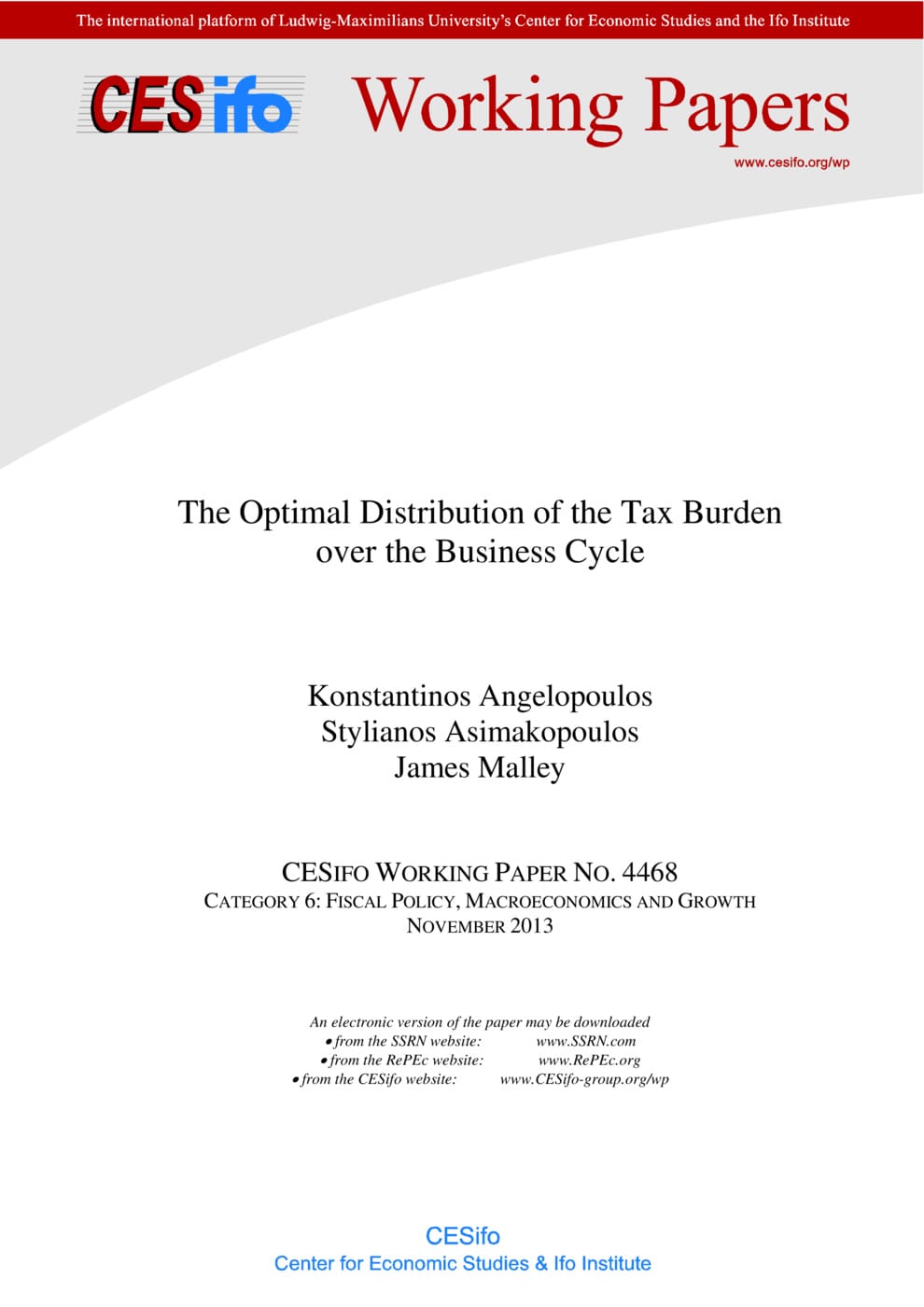The Optimal Distribution of the Tax Burden over the Business Cycle
CESifo, Munich, 2013
CESifo Working Paper No. 4468

This paper analyses optimal income taxes over the business cycle under a balanced-budget restriction, for low, middle and high income households. A model incorporating capital-skill complementarity in production and differential access to capital and labour markets is de-veloped to capture the cyclical characteristics of the US economy, as well as the empirical observations on wage (skill premium) and wealth inequality. We find that the tax rate for high income agents is optimally the least volatile and the tax rate for low income agents the least counter-cyclical. In contrast, the path of optimal taxes for the middle income group is found to be very volatile and counter-cyclical. We further find that the optimal response to output-enhancing capital equipment technology and spending cuts is to increase the progressivity of income taxes. Finally, in response to positive TFP shocks, taxation becomes more progressive after about two years.
Fiscal Policy, Macroeconomics and Growth